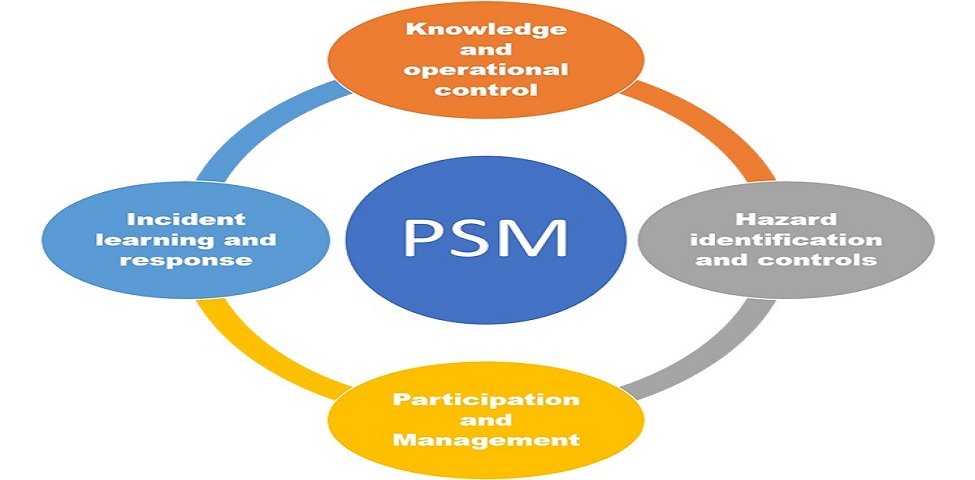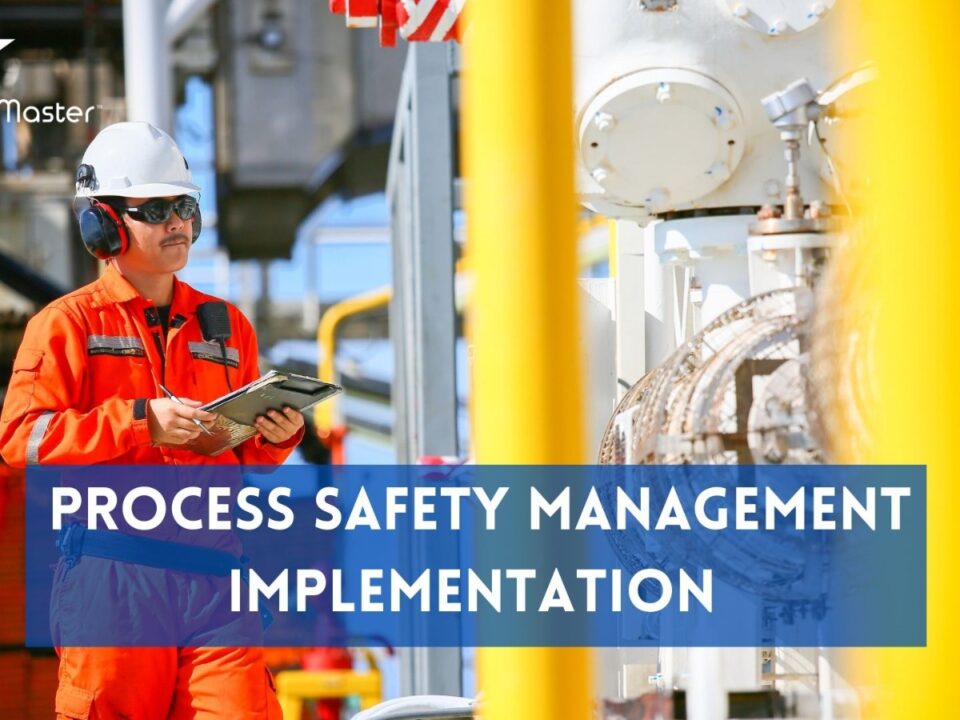Unlocking the Power of Process Safety: How HAZOP Training Can Safeguard Your Operations
Maximizing Operational Efficiency: How Process Safety Consultancy Can Benefit Your Business
August 4, 2023
Behavior Based Safety Metrics: Measuring Success and Continuous Improvement
August 7, 2023Every day, countless industries rely on complex processes to drive their operations forward. From chemical plants to manufacturing facilities, these processes form the backbone of our modern world. However, with this complexity comes inherent risks that can have catastrophic consequences if not managed effectively. The importance of process safety cannot be overstated, as even a minor oversight can lead to severe accidents, environmental damage, and significant financial losses.
In this article, we delve into the realm of process safety and explore how HAZOP (Hazard and Operability) training can provide a crucial safeguard for your operations. We will uncover the potential risks and consequences of ignoring process safety measures while highlighting the transformative impact that HAZOP training can have on your business. By the end of this article, you’ll gain valuable insights into implementing this essential training within your organization to ensure a safer working environment without compromising efficiency or productivity.
Understanding the Importance of Process Safety
Process safety is the bedrock upon which successful and sustainable operations are built. It encompasses a set of principles, practices, and tools that aim to identify, assess, and mitigate risks associated with industrial processes. Whether it is a manufacturing plant, an oil refinery, or a chemical facility, process safety is essential in safeguarding not only the employees working within these environments but also the surrounding communities and the environment.
The repercussions of neglecting process safety can be catastrophic. Major accidents have occurred throughout history that serve as stark reminders of what can happen when process safety measures are disregarded. From industrial explosions to toxic releases, these incidents have caused significant loss of life, immense economic damage, and lasting environmental consequences. Understanding the importance of process safety is not just about compliance with regulations; it is about protecting lives and livelihoods.
The Potential Risks and Consequences of Ignoring Process Safety
Ignorance may be bliss, but when it comes to process safety, it can lead to disastrous consequences. Failing to prioritize process safety within your operations can expose your organization to a myriad of risks that have the potential to cripple not only your bottom line but also, more importantly, endanger the lives and well-being of your employees.
Picture this: a manufacturing facility where safety protocols are disregarded and corners are cut in the name of efficiency. Equipment malfunctions go unnoticed, hazardous substances are mishandled, and there is a general lack of awareness regarding potential hazards. It’s a ticking time bomb waiting for the right conditions to ignite into chaos. The result? Catastrophic accidents, massive financial losses, environmental damage, legal liabilities, tarnished reputation – the list goes on.
Introducing HAZOP Training: A Key Element of Process Safety
When it comes to safeguarding your operations and ensuring the well-being of your team, one cannot underestimate the significance of HAZOP (Hazard and Operability) training. As a crucial component of process safety, HAZOP training equips your workforce with the necessary knowledge and skills to identify, assess, and mitigate potential risks inherent in complex industrial processes.
The underlying principle behind HAZOP training lies in the recognition that even the most meticulously designed systems can be susceptible to unforeseen hazards. By systematically analyzing each element of a process under different scenarios, operators can uncover vulnerabilities that might otherwise go unnoticed. This proactive approach empowers organizations to make informed decisions regarding risk reduction measures, ultimately enhancing operational efficiency while keeping workers out of harm’s way.
HAZOP Training: What It Is and How It Works
HAZOP, an abbreviation for Hazard and Operability Study, is a structured and systematic approach used to evaluate potential hazards and operability issues in industrial processes. It aims to identify deviations from the intended design or operation that could lead to accidents or inefficiencies. HAZOP training is designed to equip individuals with the knowledge and skills needed to conduct these studies effectively.
During HAZOP training, participants learn about the various stages of a HAZOP study, which typically include planning, information gathering, brainstorming sessions known as ‘nodes,’ analysis of identified hazards, recommendations for corrective measures, and documentation of findings. They also delve into techniques such as guide words analysis, deviation identification using ‘What-If’ scenarios, and consequence analysis.
The Benefits of HAZOP Training for Your Operations
HAZOP training, an essential component of process safety, offers numerous benefits that can significantly enhance the operational efficiency and overall safety of your organization. Firstly, it empowers your workforce with the knowledge and skills necessary to identify potential hazards before they escalate into major incidents. By fostering a proactive mindset among employees, HAZOP training enables them to spot deviations from normal operating conditions and take prompt corrective actions.
Moreover, HAZOP training cultivates a culture of collaboration and teamwork within your organization. Through interactive sessions and group discussions, employees learn to effectively communicate their observations and ideas. This collaborative approach not only encourages diverse perspectives but also leads to innovative solutions for risk mitigation. By harnessing the collective intelligence of your team, HAZOP training creates an environment where everyone is invested in maintaining process safety.
How to Implement HAZOP Training in Your Organization
Implementing HAZOP training in your organization requires careful planning and a dedicated approach. Here are the key steps to guide you on this journey:
1. Define Your Objectives: Start by clearly outlining your goals for implementing HAZOP training. Identify which areas of your operations need improvement and set specific targets to be achieved through this training initiative. By having well-defined objectives, you can ensure that the training aligns with your organizational needs.
2. Formulate a Training Plan: Develop a comprehensive training plan that covers all aspects of HAZOP. Consider factors such as the duration of the program, the number of sessions needed, and the resources required. Determine whether you will conduct internal training or enlist external experts to deliver the program.
3. Select a Competent Facilitator: Choose an experienced facilitator who possesses in-depth knowledge of process safety and HAZOP methodologies. The facilitator should be able to effectively engage participants, lead discussions, and provide practical insights based on real-world scenarios.
4. Identify Relevant Participants: Involve personnel from various roles within your organization, including operators, engineers, supervisors, and managers who are directly involved in process safety management. This diverse group will bring different perspectives to discussions during HAZOP sessions.
5. Schedule Regular Sessions: Plan regular sessions spread over a suitable time frame to ensure continuity and reinforce learning. It is advisable to break down complex topics into smaller modules for better comprehension and retention of information by participants.
6. Encourage Active Participation: Foster an environment that encourages active participation from
Real-Life Examples: How HAZOP Training Saved Companies from DisastersReal-life examples serve as compelling evidence of the effectiveness of HAZOP training in preventing catastrophic accidents and safeguarding operations. One such noteworthy case revolves around a chemical manufacturing company where a thorough HAZOP study identified critical flaws in their process design. By conducting focused training sessions, the company successfully equipped its team with the necessary skills to address potential hazards proactively.
In another remarkable instance, an oil refinery faced a major crisis when a significant equipment failure occurred during routine maintenance. However, due to prior HAZOP training exercises, the employees quickly recognized the hazardous situation and promptly implemented appropriate measures to mitigate the risks. This enabled them to prevent extensive damage and ensured minimal downtime for production activities.
Overcoming Challenges in Implementing HAZOP Training
Implementing HAZOP training in an organization can present several challenges, but with careful planning and a proactive approach, these obstacles can be overcome. One of the main challenges is resistance to change. Employees may be hesitant to adopt new methods or may feel overwhelmed by the additional workload associated with HAZOP training. To tackle this challenge, it is essential to create a positive and inclusive environment that emphasizes the importance of process safety and the long-term benefits of HAZOP training.
Another common challenge is ensuring adequate resources for effective implementation. This involves securing budgetary support for training materials, software tools, and skilled trainers. Organizations must recognize that investing in process safety through HAZOP training is an investment in their own success and sustainability. By educating decision-makers about the potential risks of not implementing such measures, it becomes easier to obtain the necessary resources.
Empowering Your Team: The Role of Leadership in Process Safety
In the realm of process safety, effective leadership is paramount. A strong and visionary leader can instill a culture of safety within an organization, ensuring that every member of the team is committed to maintaining high standards and preventing potential hazards. The role of leadership goes beyond mere oversight; it involves inspiring and empowering employees to actively participate in process safety initiatives.
Leadership plays a crucial role in fostering open communication channels, where employees feel comfortable reporting concerns or near misses without fear of retribution. By encouraging transparency and creating an environment that values learning from mistakes, leaders can nurture a culture where everyone feels accountable for process safety. Through their guidance, leaders provide the necessary resources and support to implement HAZOP training effectively, ensuring that all team members are well-equipped to identify risks and take appropriate preventive measures.
Measuring Success: Metrics to Assess the Effectiveness of HAZOP Training
In order to gauge the effectiveness of HAZOP training and ensure that your organization is truly benefiting from it, it is essential to have appropriate metrics in place. These metrics will not only help you evaluate the success of the training program but also provide valuable insights for continuous improvement.
One key metric to consider is the reduction in incidents and accidents after implementing HAZOP training. By comparing incident rates before and after training, you can measure how effectively your workforce has been able to identify and mitigate potential hazards. A decline in incidents demonstrates that employees are applying their newly acquired skills to make your operations safer.
Another metric to assess effectiveness is the rate of near-miss reporting. Encouraging a culture of reporting near-misses enables organizations to identify potential risks and address them proactively. An increase in near-miss reporting indicates that employees are more aware of process safety hazards and are actively engaged in identifying them before they escalate into serious incidents.
Conclusion
In conclusion, the power of process safety and the significance of HAZOP training cannot be overstated. By implementing HAZOP methodologies, organizations can effectively identify and mitigate potential hazards, safeguarding their operations and ensuring the protection of personnel, assets, and the environment. As companies prioritize process safety through HAZOP training, they create a culture of proactive risk management that fosters continuous improvement and innovation. With a commitment to comprehensive training and leadership support, organizations can navigate the complex landscape of industrial operations with confidence, knowing they have taken all necessary steps to prevent disasters. Let us embrace the transformative potential of HAZOP training and pave the way for a safer future in every sector we operate in.
Sanjeev Kumar Paruthi
Director & CEO
TSM TheSafetyMaster® Private Limited
Unit No 221-451-452, SPL1/J, 2nd & 4th Floor, Sunsquare Plaza Complex, RIICO Chowk, Bhiwadi 301019, Rajasthan, India
Phone: +91 1493 22 0093
Mobile: +91 7665231743/9413882016
Email: info@thesafetymaster.com




